Introduction to B -> K* µµ
The Bd→K*µ+µ- rare decay occurs via the flavour changing neutral currents process in the Standard Model. In this process the Bd decays via penguin and box diagrams. Its branching ratio is calculated to be 11.9+-3.9x10-7 and the combined result on its measurement from the Babar and Belle collaborations is 12.2+3.8-3.2x10 -7. Figure 1 shows some of the most relevant Feynman diagrams in this decay.
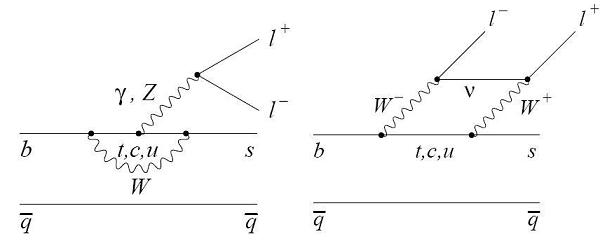
Figure 1: Some Feynman diagrams for the Bd →K* µ+ µ- decay channel
A set of important quantities can be measured with the Bd→K*µ+ µ- decay in order to test Standard Model predictions and to search for new physics. The dimuon mass distribution, differential branching ratio and forward backward asymmetry are sensitive to new physics contributions. Figure 2 shows the differential branching ratio and the forward backward asymmetry as a function of the dimuon mass according to the different theoretical models.

Figure 2: The differential branching ratio and the forward-backward asymmetry as a function of the dimuon mass for the Bd →K*µ+µ - decay channel
Event Selection
The selection of the Bd→K*µ +µ- decay in the LHCb experiment will be performed by combining the information of the measured charged particles to reconstruct their mother particles. In this case the K* will be obtained by combining their K - and π + daughter particles. The Bd meson is then obtained by combining the two muons and the K*. Figure 3 shows the Bd →K*µ+µ - with the Bd obtained in a typical production LHCb event.
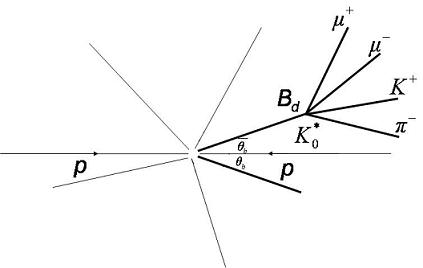
Figure 3: Bd→K* µ+ µ- signal event.
To select the signal and to reject background events a set of selection criteria are used. These criteria are based on the particular topology of the decay. The two muons are required to have their transverse momenta to be higher than a certain minimum value and to have their origin from the same decay vertex. This decay vertex is also required to be displaced from the collision vertex. Similar constraints are imposed to the K and π but it is also required that the invariant mass obtained with the K and π must be close to the K* resonance mass. The reconstructed Bd has also to satisfy some cuts in order to be selected.
Some of the variables used to select the signal events are shown on Figure 4. On the top row the distribution of the transverse momentum of the muons and the dimuon invariant mass are shown. The cuts applied on these variables are also shown. On the centre row the distribution of the transverse momentum of the reconstructed K* and its invariant mass are shown. The cuts applied are also illustrated. On the bottom row the χ 2 of the vertex obtained with the dimuon and the K* for the Bd reconstruction is shown. The impact parameter of the reconstructed Bd with respect to the primary vertex is also illustrated.
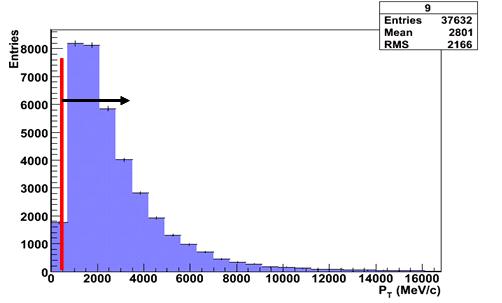
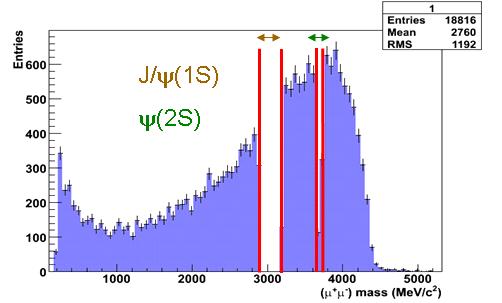
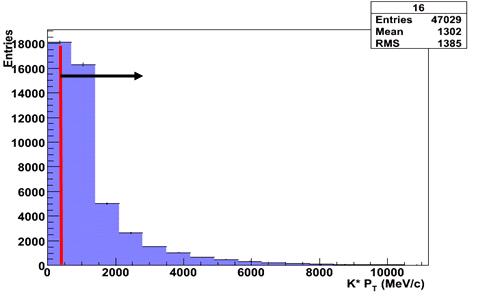
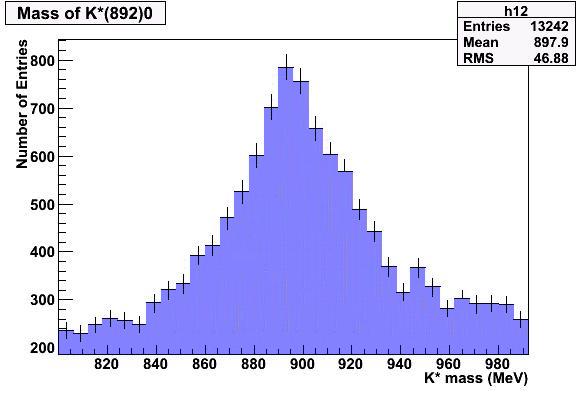
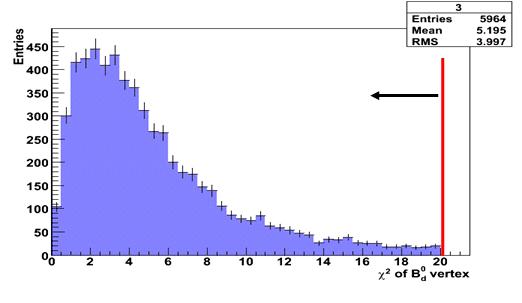
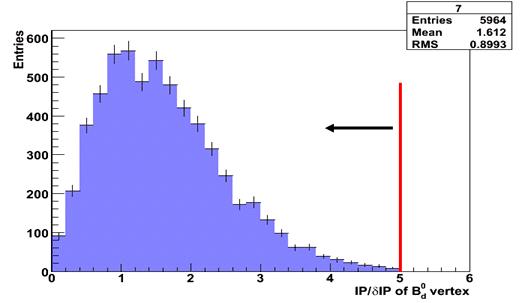
Figure 4: Distribution of some variables used in the signal selection.
In one year of data taking a number of about ~7000 signal events are expected to be selected. The selection efficiency was estimated to be εsel = 1.29 +- 0.02%. The mass resolution of the mass of the Bd was estimated to be 5279.0+-0.3 MeV/c^2 with a resolution of 17.2 +- 0.3 MeV/c^2. These numbers were estimated with a detailed simulation of the experiment that includes not only the proton-proton collisions and the decays of the particles produced but also the response of the detector to the charged particles passing through its material.